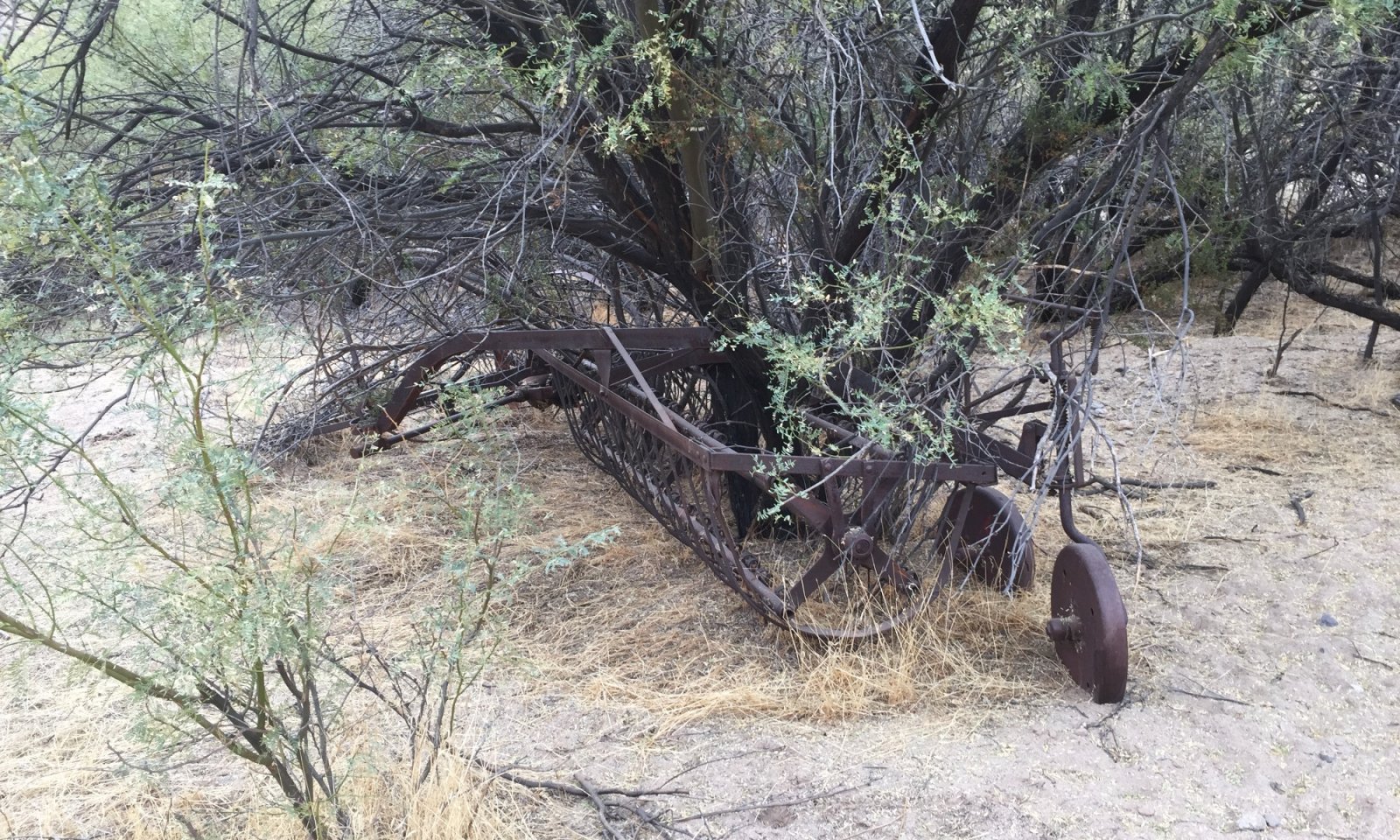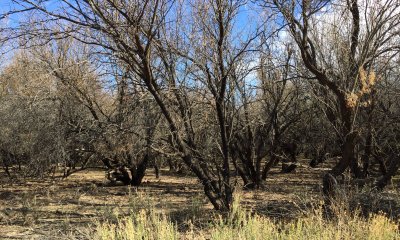
Loamy Bottom, Woodland 7"-10" p.z.
Scenario model
Current ecosystem state
Select a state
Management practices/drivers
Select a transition or restoration pathway
- Transition T1A More details
-
No transition or restoration pathway between the selected states has been described
Target ecosystem state
Select a state
Description
This site has a mixed plant community with an overstory of mesquite and an understory of shrubs and perennial and annual grasses and forbs. Mesquite leafs out in midspring after the last frost, flowers in late spring and has mature fruits dropping by July. The trees lose their leaves with the first hard frost in the fall. The aspect is deciduous woodland.
Submodel
Description
If the mesquite overstory is removed, large shrubs such as salt cedar will come to dominate the site. Mesquite and large shrubs will sprout on low-lying areas of abandoned cropland. Excessive groundwater pumping from areas adjacent to this site can, over time, lower the water table beyond the reach of mesquite roots and cause extensive loss of trees. In high water table areas, saltcedar can invade and become dominant following disturbance of the native tree cover. Bermudagrass and Johnsongrass are introduced perennials commonly found on this site. Foxtail barley, London rocket mustard and Carolina canarygrass are introduced annuals commonly found on this site. Cocklebur can become a problem weed in response to overgrazing.
Submodel
Mechanism
Any disturbance that removes significant mesquite canopy cover will drive site transition to the Mixed Shrubland. Common disturbances include land clearing for irrigated cropland (and subsequent cessation of field maintenance), excessive mesquite wood harvesting, and lowering the water table.
Constraints to recovery
Restoration would require 50-100 years of repeated brush management treatments to control undesirable shrubs. If the water table has been lowered or groundwater has been depleted, restoration is not possible. Thus, a restoration pathway is not included in the state and transition model at this time.
Model keys
Briefcase
Add ecological sites and Major Land Resource Areas to your briefcase by clicking on the briefcase (![]() ) icon wherever it occurs. Drag and drop items to reorder. Cookies are used to store briefcase items between browsing sessions. Because of this, the number of items that can be added to your briefcase is limited, and briefcase items added on one device and browser cannot be accessed from another device or browser. Users who do not wish to place cookies on their devices should not use the briefcase tool. Briefcase cookies serve no other purpose than described here and are deleted whenever browsing history is cleared.
) icon wherever it occurs. Drag and drop items to reorder. Cookies are used to store briefcase items between browsing sessions. Because of this, the number of items that can be added to your briefcase is limited, and briefcase items added on one device and browser cannot be accessed from another device or browser. Users who do not wish to place cookies on their devices should not use the briefcase tool. Briefcase cookies serve no other purpose than described here and are deleted whenever browsing history is cleared.
Ecological sites
Major Land Resource Areas
The Ecosystem Dynamics Interpretive Tool is an information system framework developed by the USDA-ARS Jornada Experimental Range, USDA Natural Resources Conservation Service, and New Mexico State University.




